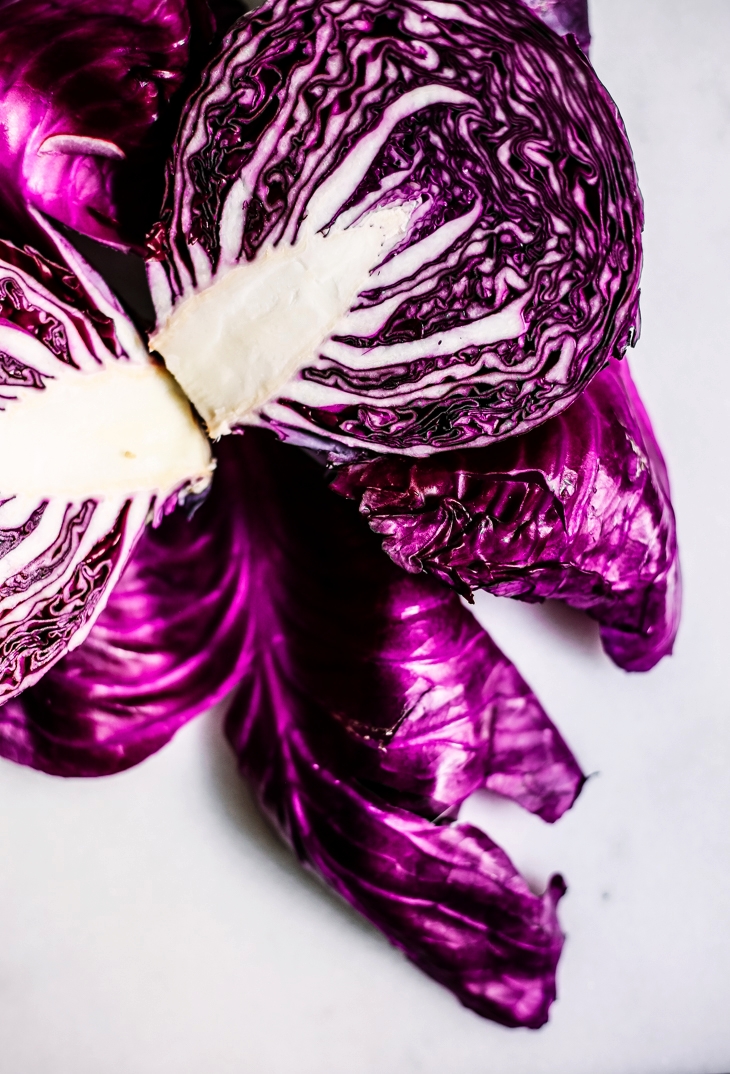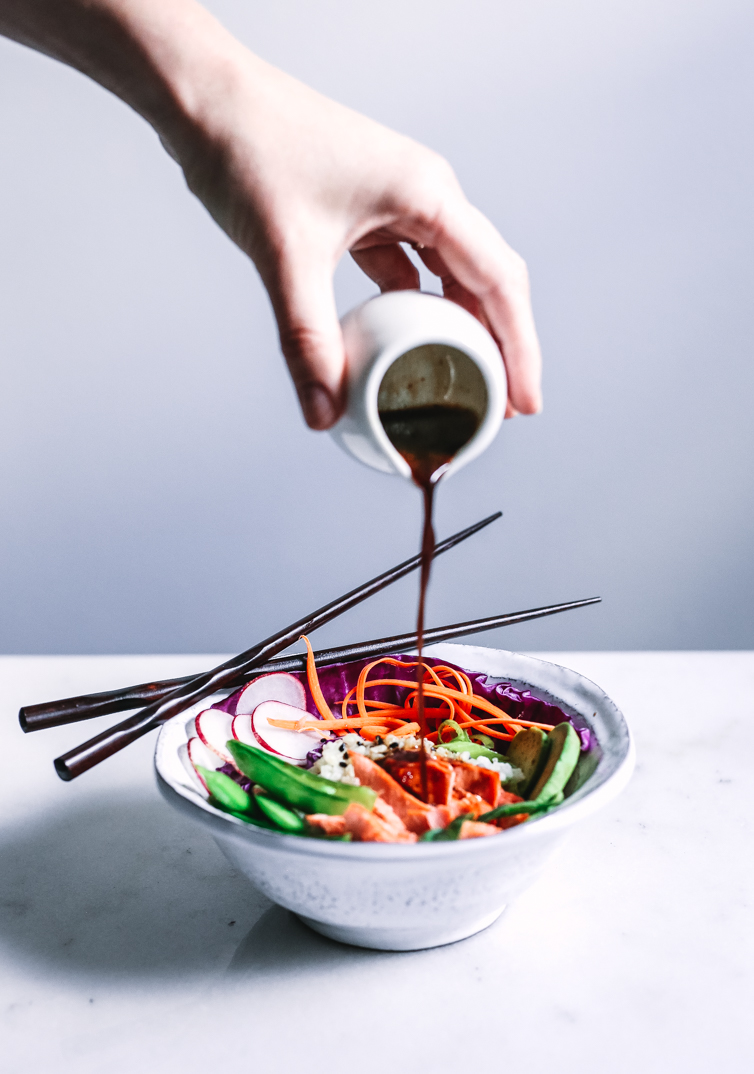A couple of weeks ago I received a diagnosis that changed my life for the better. You see, for years I’ve struggled with chronic pain in my side and abdomen, pain that I was told was just part of being a woman, and pain that I tried to forget about with prescription strength pain medicine.
And as weird as it sounds, I’d kind of just accepted that this was my life. I became an expert on pain management and even on the really bad days, the doubled over days, I’d remind myself that the doctors deemed it “normal” and not to make a big fuss over it.
Well as it turns out, this kind of pain is not in fact normal. It’s caused by a disease known as Endometriosis and aided by the large benign mass they found growing in my abdomen. And while the past few weeks have been a blur, I can't help but feel relieved to have answers and to begin my healing journey.
So what does all this have to do with food? Well, absolutely everything.
There is no cure for Endometriosis. But there is immense hope and healing to be found through diet and holistic lifestyle changes. And this hope and healing isn’t just for me. It’s for you, too. It’s for anyone suffering from chronic illness, depression, anxiety, infertility, digestive issues and more. And for anyone who just wants to feel better, have more energy and eat a diet rich in whole foods.
I know I’m not alone on this journey, and my hope is that the recipes and healing techniques coming to the blog might inspire your own path to wellness! Because if there’s one thing I know to be true, it’s that food is a miraculous healer and it’s given to us for a reason.
Going forward, you can still expect the same dose of delicious recipes! They’ll just be created with the intent to reduce inflammation and support healing. This means lots of seasonal, plant-based recipes and healthy alternatives to recipes that would typically include gluten, dairy or refined sugars.
Now without further ado, please allow me to introduce you to my new favorite lunch! This Sesame Ginger Salmon Bowl is built on a bed of riced cauliflower and topped with the kitchen sink of Thai-inspired ingredients. I like to use a mixture of raw and cooked veggies and herbs, like fresh radish, purple cabbage, mint, julienned carrots, edamame, snap peas, pickled ginger and avocado, but you can certainly throw in whatever you have on hand! You can also use brown rice in place of cauliflower rice if you’re eating grains and black sesame seeds are a nice touch either way!
The trick is tying it all together with this flavor-packed Sesame Ginger sauce!
Not only do I love this meal because it’s fresh, healthy and flavorful, but it’s a simple way to incorporate Omega-3 rich Salmon into your diet. As you may already know, Salmon is King when it comes to reducing inflammation, but sourcing high quality salmon can be tricky when you’re landlocked like me. Luckily you can order it online from one of my favorite sources, Greensbury Market. Their Alaskan Sockeye Salmon is wild-caught, sustainably sourced and incredibly delicious! And if you want to give them a try, you can use code FEASTANDFABLE10 for 10% off your first order!
I hope you enjoy this recipe and I thank you for letting me share my story!
Thank you to Greensbury Market for providing the delicious salmon for this recipe!
Sesame Ginger Salmon Bowls
for the Sesame Ginger Sauce:
- 2 tsp. toasted sesame oil
- 1/4 cup coconut aminos
- 1/8 tsp. black pepper, or more to taste
- 1” knob of fresh ginger, grated
- 1 garlic clove
- 1 tsp. rice wine vinegar
- 1 tsp. honey
- pinch of salt, optional
for the Salmon Bowls
- Wild-caught Salmon
- salt and pepper
- 1 head cauliflower or 1 package pre-riced cauliflower (found in freezer section of most grocers)
- Coconut oil (or 4 Tbsp. of the oil of your choice to cook the cauliflower rice and salmon)
topping ideas:
- radish, chopped
- fresh mint and/or basil
- julienned carrot
- edamame, cooked
- snap peas, strings removed and blanched
- avocado
- purple cabbage, shredded, sautéed or served raw
- black sesame seeds
INSTRUCTIONS
- Prepare the Sesame Ginger sauce. Place the toasted sesame oil, coconut aminos, ginger, garlic, rice wine vinegar, honey and black pepper in a bowl. Whisk to combine and set aside.
- Next, prepare the cauliflower rice. Remove the stem and quarter or chop the cauliflower until it can fit into the bowl of a food processor. Pulse the food processor until the cauliflower is the size of rice. Set aside.
- Prepare the veggies, herbs and toppings. Chop the raw vegetables, such as radish, carrot, avocado and mint or basil. Cook any ingredients that need to be blanched or boiled such as edamame and snap peas. I find purple cabbage is delicious when sautéed in a bit of ghee or coconut oil, but it’s just as tasty raw. Set the prepared veggies aside.
- Cook the cauliflower rice. In a large skillet, place 2 Tbsp coconut oil and let melt over medium high heat. Once heated through, add the cauliflower rice with a few pinches of salt and pepper. Stir to coat the rice and turn the heat down to medium. Let cook until the cauliflower is softened and cooked throughout. You can begin preparing the salmon while the rice cooks, and once it’s done, simply cover it with a lid and take it off the burner.
- To prepare the salmon, give each fillet a pinch of salt and pepper. Cook on the grill, or follow this method: Heat 1-2 Tbsp. coconut oil in a cast iron skillet over medium high heat. Once it’s nice and hot, place the salmon fillets in the skillet flesh side down. Let them sizzle away for about 2 minutes undisturbed, then place the skillet in an oven preheated to 400 degrees F. and cook for about 3-6 minutes depending on the thickness of the fillet. Once they’re cooked, carefully remove the skillet from the oven and use tongs to gently lift them out. The skin will peel off easily in one piece!
- Lastly, assemble the bowls. Place a big heap of the cauliflower rice in a bowl. Spoon a teaspoon or two of the sauce over the rice, then add in your veggies. Top with salmon, black sesame seeds and drizzle with more of the sauce. Then, enjoy!







